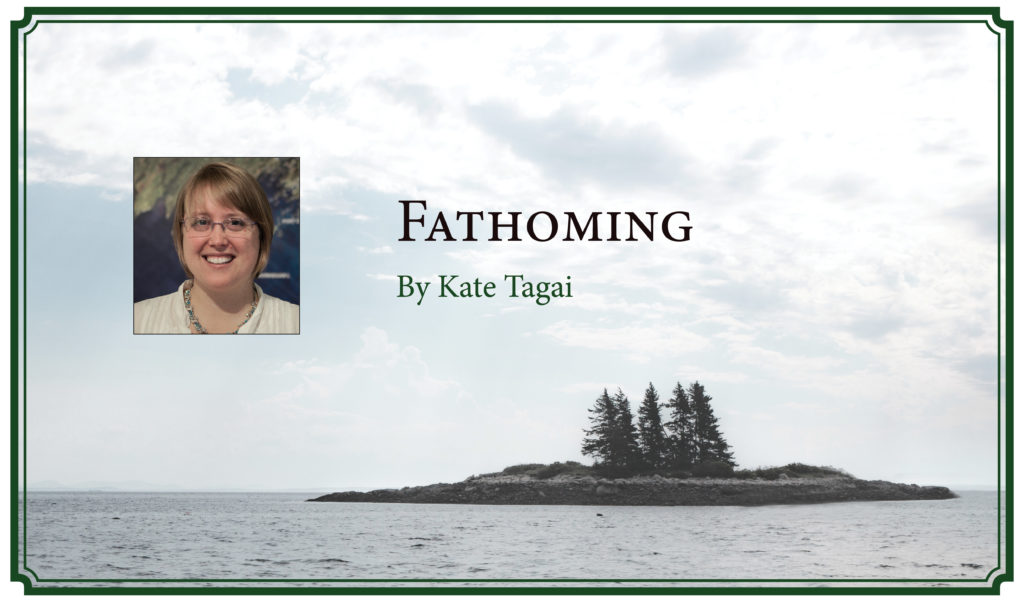“Enjoy your cup of Lake Superior,” a voice said.
I looked at the steaming coffee in my hand. I hadn’t connected the water used to brew my coffee with the great body right outside the window, but of course for the residents of Madeline Island and for the other 48 million people who live in the watershed, everything from their morning coffee to their jobs are dependent on the resources of the Great Lakes.
The lake is never far from their minds and is integral to simple daily rituals like making coffee.
I was on Madeline Island in Lake Superior for the second annual Great Lakes Island Alliance Summit, where islanders from across the Great Lakes region gather to talk about important issues. Water levels was one of the four key themes along with housing, energy, and economic development.
On Maine islands, tidal water rises and falls in a predictable daily rhythm. When Maine islanders talk about water levels, they talk about the ebb and flow of the tides, rising seas, storm surge, and ground water intrusion. Along the coast and islands, the water that drives our economy and our conversations contains salt.
In the Great Lakes, water levels vary seasonally depending on rainfall and runoff. People talk about natural phenomenon like meteotsunamis and seiches driven by atmospheric pressure and the wind. But no matter what causes the rise and fall, every conversation about water level is inextricably linked to water rights and access.
Because the Great Lakes hold 20 percent of the world’s fresh water between eight states and two Canadian provinces, unique treaties and agreements have been created to protect and regulate the system.
Even though these lakes are vast—Lake Superior holds three quadrillion gallons of water—they are also fragile. A drop of water in Lake Superior could take anywhere from 173 to 191 years to work through the system, which means that regulators need to be just as mindful about what is being put into the lake as how much is being taken out.
Over the years, massive engineering projects to divert water have led to tensions over how the system is cared for and the water used. For example, a water diversion in the 1900s changed the Illinois River so that the sewage from metropolitan Chicago would flow into the Mississippi River rather than Lake Michigan. This was done to protect the city’s water supply; however the resulting change of water direction led to more than 20 years of legal challenges and the levels of both Lake Michigan and Lake Huron being lowered by 2.5 inches because of diverted water.
Peter Annin, director of the Center for Freshwater Innovation at Northland College, says that with only 1 percent of the water renewed by groundwater flowing in through recharge[AC1] and surface water running in as runoff, managers must be mindful of the amount of water being diverted. He likens the need for conservation and regulation of the lakes to a financial endowment.
Resource managers use the 1 percent that can be recharged something like financial managers release the interest on an endowment. If the consumption is managed to match the interest, the use can go on indefinitely. But if consumption outpaces the 1 percent renewal—if, in the analogy, the principal is diverted—the lake levels will drop below what can be recovered, and if it continues unchecked, the value of the principal will be degraded.
An extreme example he uses is that of the Aral Sea near Kazakhstan, formerly the fourth largest lake in the world, which suffered a 96 percent loss of volume after source water was diverted into irrigation projects.
Though the Great Lakes are much deeper than the Aral Sea, the cautionary tale forms a strong argument for the importance of agreements such as the Great Lakes-St. Lawrence River Basin Sustainable Water Resources Agreement which outlines a collaborative framework to manage water resources.
The changing water levels of the Great Lakes are necessary to reinvigorate the ecosystem. But, as the highs and lows become more extreme with changing weather patterns and water becomes an increasingly valuable resource, the Great Lakes basin must continue to balance the integrity of the ecosystem with economic and social needs.
The Great Lakes provide a model for how to manage natural resources through collaboration across state and federal boundary lines. Though it isn’t without tensions and disagreements, as we look to protect other global shared resources such as air and oceans, the Great Lakes can be our inspiration.
Kate Tagai is a senior community development officer with the Island Institute, publisher of The Working Waterfront.





